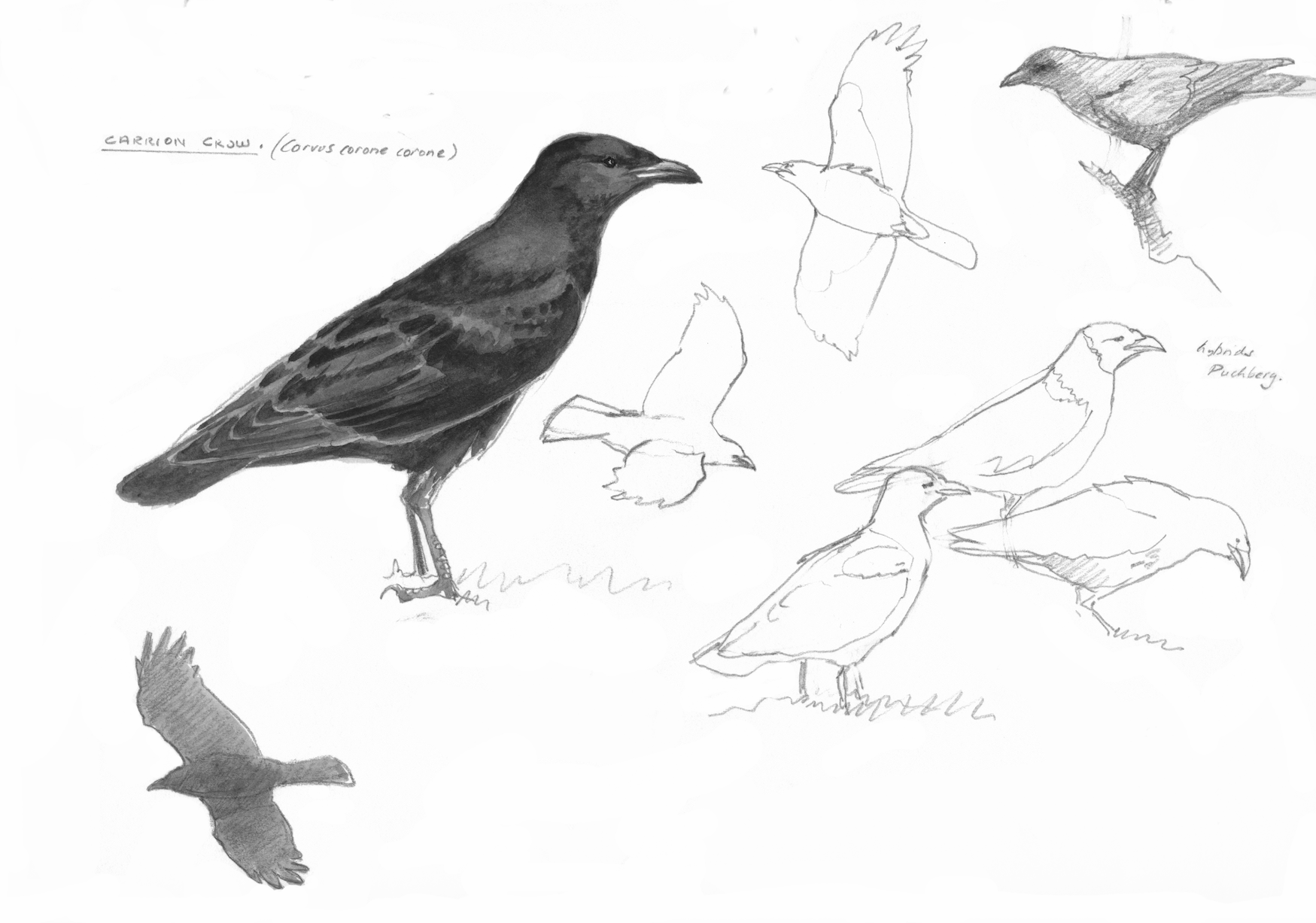CARRION CROW (Corvus corone) Cornelle Noire
Summary
A common bird of woodlands, forest edge and agricultural areas. Black with a pointed black beak, makes a wide range of sounds but is most noted for its harsh “cawing” calls:
The Carrion Crow is found throughout Switzerland - recorded close to 3,000m up in the mountains, but their population density drops off rapidly after about 1500m. In the south of Switzerland (in Ticino and the southern Grisons) the Hooded Crow occurs, once thought to be simply a race this is now recognised as a separate species. Records show that the Crow population has increased over the past 20 years or so, probably because it is so adaptable in its habits and can feed on a wide range of items from wild fruits and insects to carrion and agricultural waste, and it adapts well to urban life.
Crows are social birds (a general characteristic of the family) although not as sociable as some of its relatives like the Rook and the Jackdaw. But they are frequently found in flocks (more so in winter), and very often in pairs, and there is always some kind of interaction going on between them. As could be expected of a bird that tends to hang out in crowds there is a lot of chatter and so they make a great variety of sounds, but the basic call of the Carrion Crow is simply a loud, harsh "caw" sometimes described "kraa" usually delivered in sets of 3-4 calls in succession:
It is a call with a fundamental frequency around 1.5Khz, but with harmonics above and below that, and it slides down in frequency to about 1.3Khz towards the end of each call, you can see this on the sonogram:
You can also see from the snapshot at the right, that each call is not an even note but has small stridulations which increase in oscillation towards the end and these probably contribute to the harsh nature of the sound.
This basic call can take on different variations, one which is heard commonly was originally called by birders the "car horn" call on account of its more honking nature (but this name was called after the old rubber bulb type of horn, so it is now past its best !). This call is made at a slightly higher frequency and is an even note, not dropping lower at the end
In the spectrogram it seems a cleaner, "purer" sound:
These two calls seem to be exchanged quite freely within any set of interactions, but they undoubtedly must signify something, listen to this group going at it, in the early part the normal "caw" can be heard and at about 22s one individual gives 4 of the flat "horn " calls:
But if you were listening carefully you would have heard one other new noise in that sequence - a set of clicks at about 7s, here they are extracted:
Comon Crow: see the “clicks” after 1.8s
Carrion Crow studies © Frank Jarvis
And this is one of wonderful things about Crow vocalisations - they are capable of a whole range of subtle sounds, especially when close interaction within a pair or a family is taking place. I need to get more examples of these. The above clicks are a series of rapid ticking sounds but here is one where they take on a “purring” sound like a cat:
(yes you heard the brief warble of an Oriole in the background there). Cramp and Perrins et al describe a more aggressive anxiety call, I have not come across this but here is an example of two birds in a woodland mobbing a Goshawk whose higher pitched calls can also be heard:
and if we look at this on the sonogram it seems to be pretty much the same as the basic call to me only differing a little in being delivered more rapidly:
I have also heard gentle chuckling and mewing noises but have no recordings of these.
The basic call can carry for a long distance, and if there is a serious interaction in a flock you are certainly aware there are Crows in the neighbourhood! Here is a flock in December:







